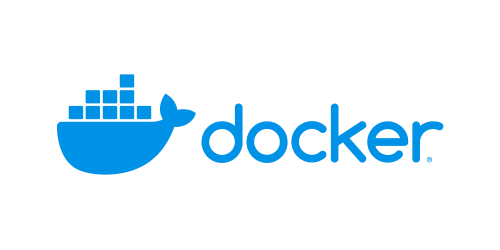

The Client Domain.
An US-based e-commerce leader, specializing in the licensed sale of clothing for men, women, and children, along with merchandise.
The company’s vertical retail model encompasses the entire process from design to high-quality manufacturing, ultimately culminating in sales. With a robust online presence, it operates its own e-commerce site and integrates seamlessly with numerous prominent online marketplaces.
Challenges.
Smooth Cloud Migration
The success of a thriving e-commerce business hinges on the uninterrupted uptime of its website, as even the slightest downtime can result in significant sales losses. Furthermore, it adversely affects various marketing initiatives, including organic search, Google Ads, Facebook, TV, and affiliate marketing campaigns.
In addition, the company encountered the challenge of migrating to a completely new website domain while preserving the exact page structure and implementing a new backend configuration. This involved adjusting the different system tiers to ensure a seamless end-user experience and maintain smooth integration with various online marketplaces.
Traffic Peaks
Marketing constitutes a significant investment for online retailers, and it often leads to surges in website traffic, particularly during campaigns such as TV commercials. During these periods, the retailer may experience up to 10 times the usual amount of traffic. However, while operating in a colocation arrangement, the company lacked confidence in its inflexible infrastructure’s ability to handle both sudden traffic spikes and accommodate its long-term business expansion goals.
Page Loading Time
Apart from the imperative of ensuring site and service uptime, the website is also highly sensitive to page loading times. Each page has unique browsing and processing demands. For instance, product category pages often involve multiple queries and are susceptible to slower loading speeds. By neglecting to construct and maintain an infrastructure that optimizes the performance of their intricate application stack, the website not only jeopardizes the end-user experience but also risks its presence on various marketplaces. For instance, consistent failure to fulfill Amazon Marketplace requests within the required service levels could lead to account suspension, resulting in annual revenue losses amounting to millions of dollars.
Continuous Optimization
Furthermore, as the Website management team proceeded with their decision to transition to AWS, they faced the task of acquiring the necessary skills and knowledge to not only migrate their intricate stack to the cloud but also effectively manage it. Additionally, the move from a stable colocation setup to an elastic cloud environment presented new challenges in terms of cost and capacity control. The team encountered a multitude of options within Amazon’s cloud portfolio, including various instance types and associated costs, which added to the complexity. It was crucial for them to prevent exceeding their allocated IT budgets while achieving the desired cloud efficiency they sought.
The Solution.
CLOUD MIGRATION
The Design Phase
By making use of its Cloud Architecture Workshop, iPivot experts efficiently acquired the necessary knowledge to successfully migrate all of Website’s IT environments. Collaborating closely with Website, the iPivot team gained a comprehensive understanding of the stack, with a particular focus on the interplay between the application and the underlying physical resources. Through a meticulous analysis of the environmental requirements and potential areas of vulnerability, iPivot’s cloud architects devised a comprehensive infrastructure redesign specifically customized for the Amazon Cloud.
Using Beanstalk and RDS
To ensure a seamless transition, all of Website’s services were deployed to AWS Elastic Beanstalk, effectively creating a clear distinction between the application environment and the underlying infrastructure. By leveraging the capabilities of AWS Beanstalk, iPivot’s team of experts facilitated efficient instance provisioning, scaling, and load balancing. This streamlined the entire process, from migrating the systems to Amazon to their ongoing management and maintenance.
During the migration, iPivot undertook the task of rebuilding the entire development and testing environment. They introduced new tools to enhance Website’s automated DevOps environment, further facilitating a seamless migration process. Over an intensive two-month period, iPivot successfully completed the comprehensive migration of Website’s systems to a well-structured AWS environment.
CLOUD MANAGEMENT
High Availability and Performance
To bolster environment uptime, iPivot experts utilized AWS RDS and harnessed its built-in self-healing mechanisms to safeguard the migrated databases. To establish a secondary disaster recovery (DR) site, the iPivot team implemented application and database replication processes across two AWS Availability Zones (AZs). Furthermore, web tier instances were provisioned with Beanstalk’s native autoscaling capability. This ensured that in the event of a surge in demand, the system could automatically scale and uphold optimal performance, safeguarding the end-user experience.
Key Products/Services Used.





24×7 Monitoring and Optimization
During the migration and the outsourcing of their cloud operation, the Client opted for iPivot’s 24×7 NOC-as-a-Service to handle their IT support tiers. An integral part of the migration process involved integrating tools for continuous monitoring and logging of Website’s cloud infrastructure. Event log data is securely stored in an isolated data store and processed using AWS Elasticsearch, enabling swift data analysis. Whenever an event occurs, a notification is generated and promptly addressed by iPivot’s NOC team, who are granted complete access to the environment and responsible for identifying the root cause of issues and following predefined protocols. In the case of application-related issues, they communicate directly with the Website R&D team.
To maintain comprehensive visibility over the dynamic environment, iPivot employs the DataDog proprietary monitoring-as-a-service solution. Additionally, a crucial responsibility of iPivot is to monitor and optimize the usage, utilization, and cloud footprint of the Website. This involves resizing resources as needed and strategically purchasing EC2 Reserved Instances (RIs) to ensure performance, meet demand, and adhere to predefined budgets.

7 Reasons why you should bid farewell to On-Premise Data Centre and move to Cloud in 2023

Cyber Security threats in Cloud-Native Applications: How attacks can lead to data breaches, system instability, and operational disruption

